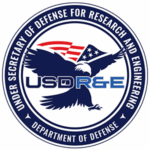Sarah Armstrong was named director of the Joint Hypersonics Transition Office Systems Engineering Field Activity at Naval Surface Warfare Center, in the Crane Division, in January 2021.
Armstrong said the U.S. has developed an integrated strategy to accelerate the development and fielding of hypersonic systems, both offensive and defensive.
“The physics of flight change in a hypersonic environment,” Armstrong said. “There are technical challenges to be addressed throughout the systems. My job is to take the systems engineering view of the overall hypersonics strategy and break it down to pieces of approachable technologies for the research community to address. We then accelerate the transition of those technologies into program implementation.”
Read the full article by Naval Sea Systems Command.


